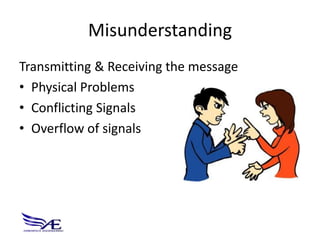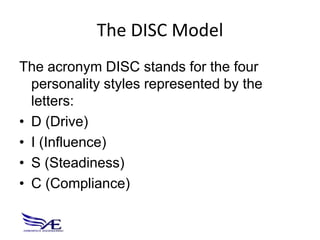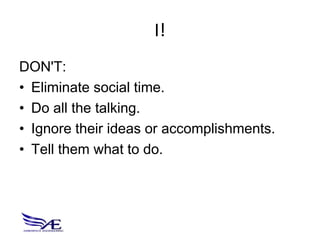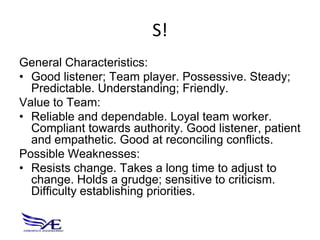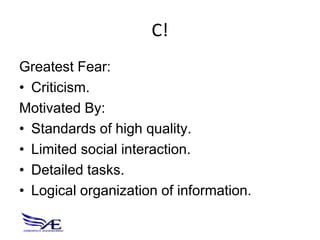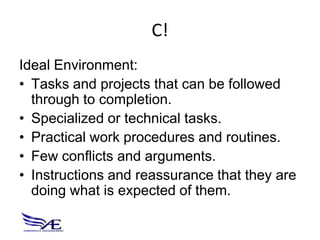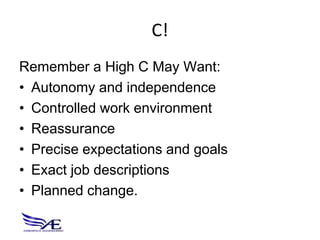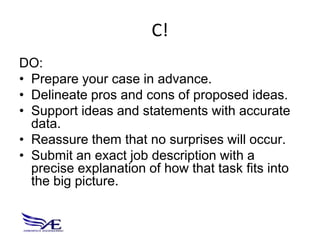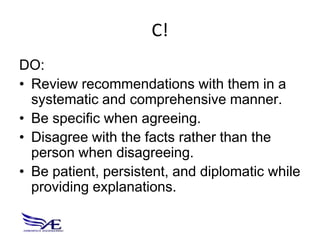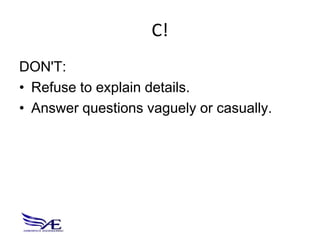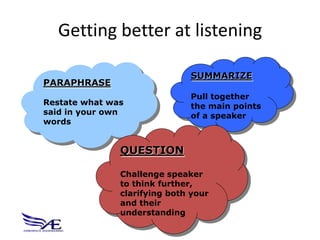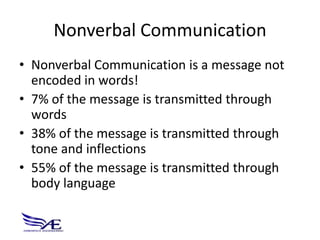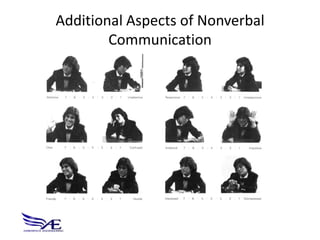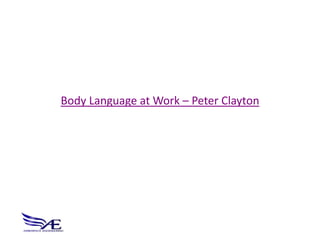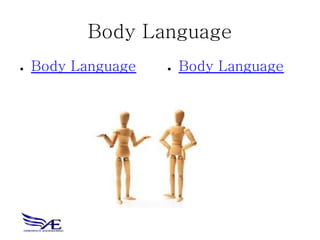Communication Skills
- 1. Effective Communication Skills for Engineers and Scientists Mohammad Tawfik Aerospace Engineering Department 17-18 July 2012
- 2. Your Speaker • Mohammad Tawfik • Assistant Professor, Aerospace Engineering, Cairo University • BSc., Aerospace Engineering, Cairo University • Diploma, Computer Science, Cairo University • MSc., Aerospce Engineering, Old Dominion U. • Meng, Mechanical Engineering, U. Maryland • PhD, Mechanical Engineering, U. Maryland
- 3. Your Speaker • National Encouragement Award 2008, Egypt, awarded June 2009. • Who’s Who in the World, 2010. • Outstanding Lecturer Award, German University in Cairo, October 2006.
- 4. Your Speaker • Mohammad.tawfik@gmail.com – Facebook – Twitter – Blogger – SlideShare – MySpaces
- 5. Tappers and Listeners A little game to start with!
- 7. Why do we Communicate?! To change behavior To get and give To get action Information To persuade To ensure understanding
- 9. Effective communication depends on skills in receiving messages as well as on skills in sending them.
- 10. Five phases linking sender and receiver • Idea • Message • Transmition • Receival • Reaction
- 11. Misunderstanding
- 12. Misunderstanding Creating the Message: • Non-clear message content • Unfamiliarity with situation or receiver • Emotional conflicts • Inability to express ideas
- 13. Misunderstanding Transmitting & Receiving the message • Physical Problems • Conflicting Signals • Overflow of signals
- 14. Misunderstanding Understanding the message • Different background • Interpretation of words • Emotional reactions
- 15. How to improve communication? Effective communication requires: • Perception • Precision • Credibility • Control • Congeniality
- 16. The DISC Model http://www.discinsights.com/cyber/ scripts/disc.asp
- 17. The DISC Model • The DISC Personality System is the universal language of behaviour. • Research has shown that behavioural characteristics can be grouped together in four major divisions called personality styles. • People with similar personality profiles styles tend to exhibit specific behavioural characteristics common to that profile. • All people share these four styles in varying degrees of intensity.
- 18. The DISC Model The acronym DISC stands for the four personality styles represented by the letters: • D (Drive) • I (Influence) • S (Steadiness) • C (Compliance)
- 19. D! General Characteristics: • Direct. Decisive. High Ego Strength. Problem Solver. Risk Taker. Self Starter Value to Team: • Bottom-line organizer. Places value on time. Challenges the status quo. Innovative Possible Weaknesses: • Oversteps authority. Argumentative attitude. Dislikes routine. Attempts too much at once.
- 20. D! Greatest Fear: • Being taken advantage of. Motivated By: • New challenges. • Power and authority to take risks and make decisions. • Freedom from routine and mundane tasks. • Changing environments in which to work and play.
- 21. D! Ideal Environment: • Innovative focus on future. • Non-routine challenging tasks and activities. • Projects that produce tangible results. • Freedom from controls, supervision, and details. • Personal evaluation based on results, not methods.
- 22. D! Remember a High D May Want: • Authority • Varied activities • Prestige • Freedom • Assignments promoting growth • “Bottom line" approach • Opportunity for advancement.
- 23. D! DO: • Be brief, direct, and to the point. • Ask "what" not "how" questions. • Focus on business; remember they desire results. • Suggest ways for him/her to achieve results, be in charge, and solve problems. • Highlight logical benefits of featured ideas and approaches.
- 24. D! DON'T: • Wander. • Repeat yourself. • Focus on problems. • Be too sociable. • Make generalizations. • Make statements without support.
- 25. I! General Characteristics: • Enthusiastic. Trusting; Optimistic. Persuasive; Talkative. Impulsive; Emotional Value to Team: • Creative problem solver. Great encourager. Motivates others to achieve. Positive sense of humour. Negotiates conflicts; peace maker. Possible Weaknesses: • More concerned with popularity than tangible results. Inattentive to detail. Overuses gestures and facial expressions. Tends to listen only when it's convenient.
- 26. I! Greatest Fear: • Rejection. Motivated By: • Flattery, praise, popularity, and acceptance. • A friendly environment. • Freedom from many rules and regulations. • Other people available to handle details.
- 27. I! Ideal Environment: • Practical procedures. • Few conflicts and arguments. • Freedom from controls and details. • A forum to express ideas. • Group activities in professional and social environments
- 28. I! Remember a High I May Want: • Social esteem and acceptance • Freedom from details and control • People to talk to • Positive working conditions • Recognition for abilities • Opportunity to motivate and influence others.
- 29. I! DO: • Build a favorable, friendly environment. • Give opportunity for them to verbalize about ideas, people and their intuition. • Assist them in developing ways to transfer talk into action. • Share testimonials from others relating to proposed ideas.
- 30. I! DO: • Allow time for stimulating, sociable activities. • Submit details in writing, but don't dwell on them. • Develop a participative relationship. • Create incentives for following through on tasks.
- 31. I! DON'T: • Eliminate social time. • Do all the talking. • Ignore their ideas or accomplishments. • Tell them what to do.
- 32. S! General Characteristics: • Good listener; Team player. Possessive. Steady; Predictable. Understanding; Friendly. Value to Team: • Reliable and dependable. Loyal team worker. Compliant towards authority. Good listener, patient and empathetic. Good at reconciling conflicts. Possible Weaknesses: • Resists change. Takes a long time to adjust to change. Holds a grudge; sensitive to criticism. Difficulty establishing priorities.
- 33. S! Greatest Fear: • Loss of security. Motivated By: • Recognition for loyalty and dependability. • Safety and security. • No sudden changes in procedure or lifestyle. • Activities that can be started and finished.
- 34. S! Ideal Environment: • Practical procedures and systems. • Stability and predictability. • Tasks that can be completed at one time. • Few conflicts and arguments. • A team atmosphere.
- 35. S! Remember a High S May Want: • Security in situations • Sincere appreciation • Repeated work patterns • Time to adjust to change • Limited territory of responsibility.
- 36. S! DO: • Create a favorable environment: personal and agreeable. • Express a genuine interest in them as a person. • Provide them with clarification for tasks and answers to "how" questions. • Be patient in drawing out their goals.
- 37. S! DO: • Present ideas or departures from current practices in a non-threatening manner; give them time to adjust. • Clearly define goals, procedures and their role in the overall plan. • Assure them of personal follow-up support. • Explain how their actions will minimize the risks involved and enhance current procedures.
- 38. S! DON'T: • Be pushy • Overly aggressive, or demanding. • Be too confrontational.
- 39. C! General Characteristics: • Accurate; analytical. Conscientious; careful. Fact- finder; precise. High standards; systematic. Value to Team: • Perspective: "the anchor of reality." Conscientious and even-tempered. Thorough to all activities. Defines situation; gathers, criticizes and tests information. Possible Weaknesses: • Needs clear-cut boundaries for actions/relationships. Bound by procedures and methods. Gets bogged down in details. Prefers not to verbalize feelings. Will give in rather that argue.
- 40. C! Greatest Fear: • Criticism. Motivated By: • Standards of high quality. • Limited social interaction. • Detailed tasks. • Logical organization of information.
- 41. C! Ideal Environment: • Tasks and projects that can be followed through to completion. • Specialized or technical tasks. • Practical work procedures and routines. • Few conflicts and arguments. • Instructions and reassurance that they are doing what is expected of them.
- 42. C! Remember a High C May Want: • Autonomy and independence • Controlled work environment • Reassurance • Precise expectations and goals • Exact job descriptions • Planned change.
- 43. C! DO: • Prepare your case in advance. • Delineate pros and cons of proposed ideas. • Support ideas and statements with accurate data. • Reassure them that no surprises will occur. • Submit an exact job description with a precise explanation of how that task fits into the big picture.
- 44. C! DO: • Review recommendations with them in a systematic and comprehensive manner. • Be specific when agreeing. • Disagree with the facts rather than the person when disagreeing. • Be patient, persistent, and diplomatic while providing explanations.
- 45. C! DON'T: • Refuse to explain details. • Answer questions vaguely or casually.
- 46. Listening
- 47. Factors affecting listening 1- Personality 2- Intelligence 3- Scholastic achievement 4- Verbal ability and vocabulary 5- Note taking 6- Motivation 7- Organizational ability 8- Environment
- 48. Barriers to effective listening 1- People perceive stimuli according to their individual frames of reference 2- People perceive stimuli according to their own expectations 3- People perceive stimuli according to individual attitudes and beliefs 4- The continuing relationship between speaker and listener plays an important role in perception 5- Ineffective listeners are unaware of nonverbal cues 6- ''Signal'' words can cause anxiety or raise emotions
- 49. Common Communication Errors • Finishing others’ sentences • Preparing our response before someone has completed speaking • Multitasking while ‘listening’ • Filtering content or meaning based on the speaker • Speaking for others (we…)
- 50. Keys to effective listening • 1- Find areas of interest • 2- Judge content, not delivery • 3- Hold your fire • 4- Listen for ideas • 5- Be flexible • 6- Work at listening • 7- Resist distractions • 8- Exercise your mind • 9- Keep your mind open • 10- Capitalize on fact thought is faster than speech
- 51. Getting better at listening SUMMARIZE PARAPHRASE Pull together Restate what was the main points said in your own of a speaker words QUESTION Challenge speaker to think further, clarifying both your and their understanding
- 53. Nonverbal Communication • Nonverbal Communication is a message not encoded in words! • 7% of the message is transmitted through words • 38% of the message is transmitted through tone and inflections • 55% of the message is transmitted through body language
- 54. 55% Tonal 38% Visual 7% Verbal
- 55. Facial Expressions Interest Disgust Fear Happiness Determination Anger Surprise Bewilderment Contempt Sadness
- 56. Forms of nonverbal communication • Eye contact • Gesture • Posture • Clothing • Facial expressions • Voice
- 57. Cross-cultural Communication • Time in Other Cultures • Kinesics in Different Cultures • Proxemics across Cultures • Touch in Different Cultures • Dress in Other Cultures
- 58. Additional Aspects of Nonverbal Communication
- 59. Additional Aspects of Nonverbal Communication
- 60. Body Language at Work – Peter Clayton
- 61. Body Language ● Body Language ● Body Language













